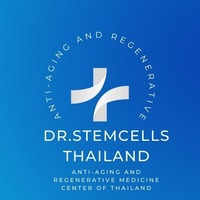CREST syndrome

CREST Syndrome
CREST syndrome is a subtype of limited systemic sclerosis (scleroderma), an autoimmune connective tissue disorder characterized by fibrosis, vascular abnormalities, and immune system activation. The acronym CREST represents five key clinical features commonly seen in this syndrome:
- Calcinosis: Deposits of calcium salts in the skin, often forming hard lumps typically on the fingers or other areas. These deposits can be painful and may cause skin ulcers or limit movement12356.
- Raynaud’s phenomenon: Episodic vasospasm of small blood vessels in the fingers and toes triggered by cold or stress, leading to color changes (white, blue, then red), numbness, tingling, and pain. It is often the earliest symptom and may precede other manifestations by years12356.
- Esophageal dysmotility: Dysfunction of the esophageal muscles causing difficulty swallowing, acid reflux, heartburn, or regurgitation due to fibrosis and impaired motility2356.
- Sclerodactyly: Thickening and tightening of the skin on the fingers and toes, causing stiffness, reduced mobility, and sometimes deformities such as claw-like fingers2356.
- Telangiectasia: Dilated small blood vessels visible as red spots or spider veins on the skin, commonly on the face, lips, hands, and inside the mouth2356.
Clinical Presentation
- Symptoms typically develop gradually, often starting with Raynaud’s phenomenon and progressing to skin changes and internal organ involvement.
- Skin thickening is usually limited to the fingers, hands, and face (limited cutaneous involvement).
- Internal organ involvement is less severe than in diffuse scleroderma but may include pulmonary hypertension, which can be life-threatening if untreated.
- Fatigue, joint pain, and gastrointestinal symptoms are common45678.
Diagnosis
- Based on clinical features and history, supported by laboratory tests such as antinuclear antibodies (ANA) and anti-centromere antibodies, which are frequently positive in CREST syndrome.
- Imaging and functional studies may assess esophageal motility and pulmonary hypertension.
- Nailfold capillaroscopy can reveal characteristic microvascular changes.
Treatment
- There is no cure; treatment focuses on managing symptoms and preventing complications.
- Raynaud’s phenomenon: Avoid cold, use vasodilators like calcium channel blockers.
- Calcinosis: Pain management, sometimes surgical removal of calcium deposits.
- Esophageal dysfunction: Proton pump inhibitors and dietary modifications to reduce reflux and improve swallowing.
- Skin and joint symptoms: Immunosuppressants (e.g., methotrexate, mycophenolate) may be used.
- Regular monitoring for pulmonary hypertension and other complications is essential356.
Prognosis
- Generally better than diffuse systemic sclerosis due to limited skin and organ involvement.
- Pulmonary hypertension remains a major cause of morbidity and mortality.
- Early diagnosis and multidisciplinary management improve quality of life and outcomes467.
Summary Table
| Feature | Description |
|---|---|
| Disease Type | Limited cutaneous systemic sclerosis (scleroderma) subtype |
| Key Symptoms | Calcinosis, Raynaud’s phenomenon, esophageal dysmotility, sclerodactyly, telangiectasia |
| Autoantibodies | Anti-centromere antibodies (common) |
| Organ Involvement | Primarily skin, esophagus; possible pulmonary hypertension |
| Treatment | Symptom management, vasodilators, immunosuppressants, proton pump inhibitors |
| Prognosis | Variable; generally better than diffuse scleroderma; risk of pulmonary hypertension |
Consult with Our Team of Experts Now!
At DrStemCellsThailand (DRSCT)‘s Anti-Aging and Regenerative Medicine Center of Thailand, we emphasize comprehensive evaluations and personalized treatment plans of Cellular Therapy and Stem Cells for managing various health conditions. If you have questions about CREST syndrome or would like more information on our services, consult with our experts today!
Consult with Our Team of Experts Now!
References1 Stanford Health Care: CREST Syndrome2 MedlinePlus Medical Encyclopedia: CREST syndrome3 WebMD: CREST Syndrome and Scleroderma4 Mayo Clinic: Scleroderma – Symptoms and Causes5 Summit Rheumatology: What You Need To Know About CREST Syndrome6 Saint Luke’s Health System: Understanding CREST Syndrome7 Cleveland Clinic: Scleroderma: Symptoms, Causes & Treatment Options8 Verywell Health: CREST Syndrome: Symptoms, Treatment, and More
CREST syndrome is a chronic autoimmune condition marked by characteristic vascular and fibrotic changes. Early recognition and targeted management are vital to improve patient outcomes and reduce complications.















